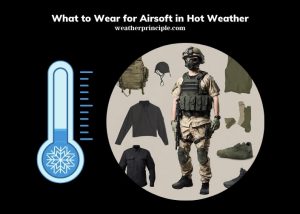Published on: May 11, 2023
Written by Shaown Khan / Fact-checked by Kader Khan
Clouds are an essential part of our atmosphere, playing a crucial role in Earth’s weather patterns and climate. They can be both mesmerizing and informative, providing clues about the weather that awaits us. By understanding cloud types and formations, we can better predict atmospheric conditions and prepare ourselves for various weather events.
Clouds form when warm, moist air rises and cools in the atmosphere. As the air cools, the water vapor within it condenses into tiny water droplets or ice crystals. These droplets and crystals cluster together, creating the visible structures we recognize as clouds.
Cloud Classification
A. High-level Clouds (16,500 feet and above)
Cirrus (Ci)
- Formation and characteristics: Cirrus clouds are thin, wispy clouds composed of ice crystals. They are typically found at high altitudes where the air is cold and dry.
- Common weather patterns associated: Cirrus clouds often indicate fair weather, but they can also be a precursor to an approaching warm front, which may bring precipitation.
Cirrocumulus (Cc)
- Formation and characteristics: Cirrocumulus clouds are small, rounded cloud patches that appear in rows or ripples. They are composed of ice crystals or supercooled water droplets.
- Common weather patterns associated: Cirrocumulus clouds are relatively uncommon and usually indicate stable, fair weather conditions. They can also signify the presence of an approaching warm front.
Cirrostratus (Cs)
- Formation and characteristics: Cirrostratus clouds form a thin, transparent layer that covers the entire sky. They are composed of ice crystals and often produce a halo effect around the sun or moon.
- Common weather patterns associated: Cirrostratus clouds are typically associated with an approaching warm front, which may bring precipitation within the next 24 hours.

Mid-level Clouds (6,500 feet to 16,500 feet)
Altocumulus (Ac)
- Formation and characteristics: Altocumulus clouds are composed of water droplets or ice crystals, appearing as white or gray patches, rolls, or ripples in the sky. They are larger than cirrocumulus clouds but smaller than stratocumulus clouds.
- Common weather patterns associated: Altocumulus clouds can be a sign of an approaching cold front or instability in the atmosphere, which may lead to thunderstorms or rain showers.
Altostratus (As)
- Formation and characteristics: Altostratus clouds form a gray or blue-gray sheet that covers the sky, often obscuring the sun or moon. They are composed of water droplets or ice crystals, depending on the temperature.
- Common weather patterns associated: Altostratus clouds typically indicate an approaching warm front, with precipitation likely to follow within the next few hours or the day.
Nimbostratus (Ns)
- Formation and characteristics: Nimbostratus clouds are thick, dark gray clouds that cover the sky, often accompanied by precipitation. They are composed of water droplets and ice crystals, depending on the altitude and temperature.
- Common weather patterns associated: Nimbostratus clouds are associated with steady, moderate to heavy precipitation, lasting several hours or more.
Low-level Clouds (below 6,500 feet)
Stratocumulus (Sc)
- Formation and characteristics: Stratocumulus clouds are low, lumpy clouds with a gray or white appearance. They often form in rows or patches and are composed of water droplets.
- Common weather patterns associated: Stratocumulus clouds typically indicate stable weather conditions and may produce light precipitation or drizzle. They can also signal the dissipation of a weather system, leading to clearer skies.
Stratus (St)
- Formation and characteristics: Stratus clouds are low, uniform gray clouds that cover the sky like a blanket. They are composed of water droplets and may produce light precipitation or drizzle.
- Common weather patterns associated: Stratus clouds generally indicate stable, overcast weather conditions. They can also form as fog lifts from the ground during the morning hours.
Cumulus (Cu)
- Formation and characteristics: Cumulus clouds are puffy, cotton-like clouds with flat bases and rounded tops. They are composed of water droplets and form when warm air rises and cools.
- Common weather patterns associated: Cumulus clouds often indicate fair weather conditions. When they continue to grow vertically, they can develop into towering cumulus or cumulonimbus clouds, leading to thunderstorms.
Clouds with Vertical Development
Cumulonimbus (Cb)
- Formation and characteristics: Cumulonimbus clouds are towering, anvil-shaped clouds with dark, flat bases and cauliflower-like tops. They are composed of water droplets and ice crystals and form in unstable atmospheric conditions.
- Common weather patterns associated: Cumulonimbus clouds are associated with severe weather events, such as heavy rain, hail, lightning, and tornadoes.
Towering Cumulus (TCu)
- Formation and characteristics: Towering cumulus clouds are tall, cauliflower-like clouds with sharp edges and a strong vertical development. They are composed of water droplets and form in unstable atmospheric conditions.
- Common weather patterns associated: Towering cumulus clouds can be a precursor to cumulonimbus clouds and thunderstorms. They may produce moderate to heavy showers and, occasionally, lightning.
Special Cloud Formations
Mammatus clouds
- Formation and characteristics: Mammatus clouds are pouch-like formations that hang beneath the base of other clouds, most commonly cumulonimbus. They are composed of ice crystals or water droplets and form due to sinking air and temperature differences within the cloud.
- Associated weather events: Mammatus clouds often appear during or after severe thunderstorms and can be an indicator of strong turbulence and potential hail.
Lenticular clouds
- Formation and characteristics: Lenticular clouds are lens-shaped clouds that typically form near mountains or other topographic features. They are composed of water droplets or ice crystals and form due to stable, moist air flowing over a mountain, creating a standing wave pattern.
- Associated weather events: Lenticular clouds are typically associated with stable weather conditions but can also indicate strong turbulence for aircraft.
Contrails
- Formation and characteristics: Contrails are artificial cloud formations created by the exhaust of aircraft engines. They are composed of ice crystals that form when hot, moist air from the engine mixes with the colder, drier air in the atmosphere.
- Environmental impact: Contrails can contribute to climate change by trapping heat within the Earth’s atmosphere and increasing its overall temperature.
Cloud Identification and Observation
Tips for successful cloud spotting
- Observe clouds during different times of the day and in various weather conditions.
- Use binoculars or a telescope for a closer look at high-altitude clouds.
- Keep a cloud journal to track your observations and improve your identification skills.
Citizen science and cloud observation
Citizen science initiatives, such as the National Oceanic and Atmospheric Administration’s (NOAA) Skywarn program, encourage amateur cloud spotters to report significant weather events and contribute to a better understanding of the atmosphere. By participating in these programs, you can help meteorologists monitor and predict weather patterns more accurately.
Summary
Recap of cloud types and formations
Understanding the various cloud types and formations can provide insights into the weather patterns and atmospheric conditions around us. From high-level cirrus clouds that signal fair weather to towering cumulonimbus clouds that warn of severe storms, each cloud formation has a story to tell.
The significance of clouds in weather forecasting and climate change
Clouds play a crucial role in Earth’s weather and climate systems. They help regulate the planet’s temperature, influence precipitation patterns, and impact the water cycle. By studying clouds and their formations, meteorologists can better predict weather events and monitor the effects of climate change on our atmosphere.
Frequently Asked Questions (FAQs)
How are clouds formed?
Clouds form when warm, moist air rises and cools in the atmosphere. As the air cools, the water vapor within it condenses into tiny water droplets or ice crystals, which cluster together to create visible cloud structures.
Why do clouds have different shapes and colors?
Cloud shapes and colors are influenced by factors such as altitude, temperature, moisture content, and atmospheric stability. For instance, high-level clouds are composed of ice crystals and appear wispy, while low-level clouds are composed of water droplets and can appear more dense and gray.
Can we predict the weather by observing clouds?
While observing clouds can provide some clues about upcoming weather events, meteorologists rely on a combination of cloud observations, satellite data, and computer models to create accurate weather forecasts.
How do clouds affect the Earth’s climate?
Clouds can both warm and cool the Earth’s climate. They reflect sunlight back into space, which helps cool the planet, and they also trap heat within the atmosphere, contributing to the greenhouse effect.
What is the role of clouds in the water cycle?
Clouds are an essential part of the water cycle, as they are responsible for transporting water vapor around the Earth. When cloud particles become large enough, they can fall as precipitation, replenishing the Earth’s water supply in the form of rain, snow, or other forms of precipitation.



